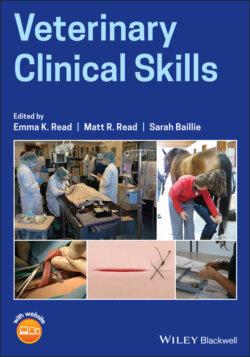Читать книгу Veterinary Clinical Skills - Группа авторов - Страница 25
Flipped Classrooms and Additional Teaching Resources
ОглавлениеAs laboratory time is precious, it is best spent with hands‐on learning. Therefore, if students can arrive ready to start practice, better utilization of the instructional team and the time available may be gained (Malone, 2019). A wide array of resources has been developed to facilitate self‐directed learning, including micro‐lectures that can be delivered online, learning guides, videos (including YouTube videos), audiovisual aids, and self‐ and peer‐assessment checklists (Read and Hecker, 2013; Dilly et al., 2014; Malone, 2019; Morin et al., 2020). The information that can be included in the learning guides can comprise the name of the activity, reason the skill or procedure is important in veterinary practice, step‐by‐step instructions for performing the activity, descriptions of common errors, suggested resources, relevant Day‐One skills, and a sample evaluation form (Morin et al., 2020). These resources are now typically combined in an online mini‐course or flipped classroom for students to complete prior to the practical lab session, resulting in better preparation and use of class time (Frendo Londgren et al., 2020), and enhanced performance on OSCEs (Decloedt et al., 2020).
Videos and computer‐assisted learning modules have been used successfully to teach a variety of basic, as well as advanced, clinical skills in medical education (Malone, 2019). In veterinary education, students using a self‐learning computer module to learn nasogastric intubation in a horse out‐performed those taught via lecture plus live demonstration as assessed through knowledge tests, time to successful intubation, and confidence levels (Abutarbush et al., 2006). In another study, Langebaek and colleagues (Langebaek et al., 2016) evaluated which resources veterinary students used most frequently for a castration laboratory and found the students preferred videos to texts, reviewed the video repeatedly while many did not open the text documents, and recalled material from the videos better than from other sources. In a study involving veterinary nursing students, Dunne et al. (2015) found that teaching clinical skills by means of video clips and practical classes were preferred over live animal practical laboratories or demonstrations, as students felt safer with these controlled methods/environments as a first introduction to a practical procedure or clinical skill. However, in most situations the skills taught by either micro‐lecture and/or video‐only do not effectively substitute for time spent with hands‐on training in the laboratory and are not generally sufficient as the sole method of learning clinical skills (Malone, 2019).
